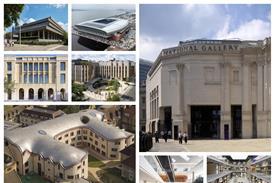- Home
- Intelligence for Architects
- Subscribe
- Jobs
- Events

2025 events calendar Explore now 
Keep up to date
Find out more
- Programmes
- CPD
- More from navigation items
Is development on top of protected buildings really a good idea?

As controversial schemes to build above listed structures proliferate, Eleanor Jolliffe asks whether the architects involved are putting profit before principle
In nearly ten years of writing columns for BD I have rarely, if ever, commented on architectural style. It’s not that I don’t have opinions. I just don’t believe everyone should share mine. Architectural principles are important but we can get too tangled in style wars and forget that streets and cities need some diversity. I think today I am as close as I have ever come of my self-imposed rule on commenting directly on another architect’s design.
I have recently seen a steady trickle of planning applications and press reports about building over historic buildings. I am not talking about sensitively employed rooftop extensions. I am talking about a building almost floating over a heritage asset. The most noted recent examples are Marron’s proposal for 80 Broad Street in Birmingham, or Herzog and de Meuron’s proposals for Liverpool Street Station in London.
…
This content is available to registered users | Already registered?Login here
You are not currently logged in.
To continue reading this story, sign up for free guest access
Existing Subscriber? LOGIN
REGISTER for free access on selected stories and sign up for email alerts. You get:
- Up to the minute architecture news from around the UK
- Breaking, daily and weekly e-newsletters
Subscribe to Building Design and you will benefit from:

- Unlimited news
- Reviews of the latest buildings from all corners of the world
- Technical studies
- Full access to all our online archives
- PLUS you will receive a digital copy of WA100 worth over £45
Subscribe now for unlimited access.






